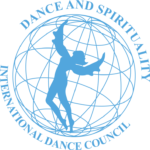
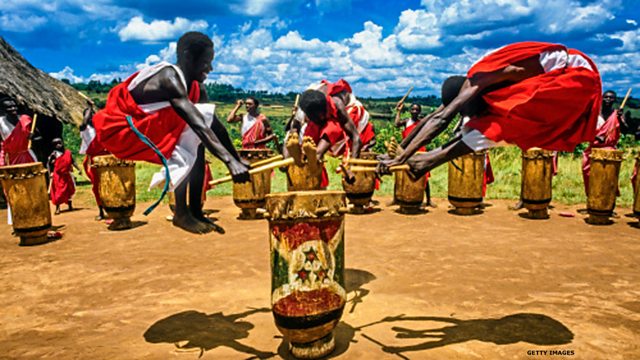
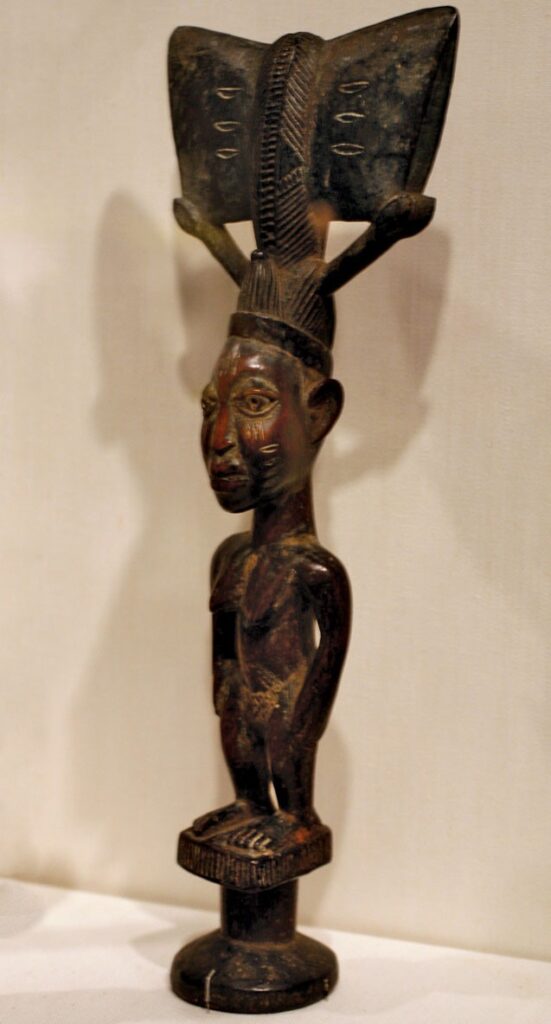
Traditional African Religions
Adherents of traditional religions in Sub-Saharan Africa are distributed among 43 countries and are estimated to number over 100 million. Although the majority of Africans today are adherents of Christianity or Islam, African people often combine the practice of their traditional belief with the practice of Abrahamic religions.
The traditional beliefs and practices of African people include various ethnic religions. Generally, these traditions are oral passed down from one generation to another through folk tales, songs and festivals . They include belief in an amount of higher and lower gods, sometimes even in a supreme creator, belief in spirits, veneration of the ancestors , use of magic and traditional African medicine.
Most religions can be described as animistic with various polytheistic and pantheistic aspects.
The role of humanity is generally seen as one of harmonizing nature with the supernatural
Every aspect of life in Africa is imbued with spirituality. To a great extent there is no formal distinction drawn between sacred and secular, religious and non-religious, spiritual or material. In many African languages there is no word for religion, Sacred rituals are integral part of daily life. From birth to death, every transition in an individual’s life is marked by some form of ritual observance.
Ancestor worship is common in Africa and is an important part of religious practice. The dead are believed to live on in the “Spirit World” Gods and deceased ancestors must be treated with respect so that they will lend a helping hand when called to do so.
People also pray to nature, elementary and animal spirits.
African Religions and Dance
African dance moves all parts of the body. Angular bending of arms, legs, and torso; shoulder and hip movement; scuffing, stamping,and hopping steps; asymmetrical use of the body; and fluid movement are all part of African dance.
Traditionalists describe the dancing body in Africa as a worshiping and worshiper body. It is a medium that embodies the experiences of life, pleasure, enjoyment, and sensuality. The body of the African dancer overflows with joy and vitality, it trembles, vibrates, radiates, it is charged with emotions. African dances are characterized by musical and rhythmic sophistication.
Spirituality imbues ritual dances but also many of the ceremonial ones


Ritual dances to connect to the divine
Many African dances are the means by which individuals relate to ancestors and other divinities. What ever the motivation of the dance, it combines the expression of human feeling with the higher aspirations of man to communicate with the cosmos.
Dance is an integral part of a larger system. Dance expresses dynamic forces which constantly influence each other. Humans (both living and the dead), animals, vegetables, and minerals all posses this vital force in varying amounts. In a sense, each divinity is created and empowered by the concentration and devotion of the worshipers. If there is no human effort, there is no god and thus no chance to enhance the quality of life.
West and Central African religious practices generally manifest themselves in communal ceremonies or divinatory rites in which members of the community, overcome by force , are excited to the point of going into meditative trance in response to rhythmic or driving drumming or singing.
Ceremonial Dances
Although ceremonial or cultural functions are more commemorative and transient than rituals, they are still important. Dances appear as parts of broader cultural activities:
-Dances of possession and summoning are common themes, and very important in many Traditional African Religions. They all share one common link: A call to a Spirit. These spirits can be the spirits of Plants or Forests, Ancestors, or Deities. The Orishas are the Deities found in many forms of African religion, Each orisha has their
favorite colors, days, times, foods, drinks, music, and dances. The dances will be used on special occasions to honor the orisha, or to seek help and guidance
– Griotic Dance not only represent historical documents, but they are ritual dramas and dances. The Dances often tell stories that are part of the oral history of a community.
– The dances of Initiation The dances of initiation, or rites of passage, are pervasive
throughout Africa and function as moments of definition in an individual’s life or sometimes key opportunities to observe potential marriage partners.
– Other ceremonial dances are the dances of love performed on weddings and anniversaries , dances of welcome to honor visitors, Royal Dances to honor Chiefs at festivals or royal funerals, Communal Dances reflecting life and particularities of a community
Traditions and dances
The following list is limited to a few well-known traditions and is continuously enriched by particular presentations of our contributors
WEST AFRICA
Vodun
(Ghana Efe , Benin and Togo Fon, Nigeria a part of Yorubas)
Vodun cosmology centers around the vodun spirits and other elements of divine essence that govern the Earth, a hierarchy that range in power from major deities governing the forces of nature and human society to the spirits of individual streams, trees, and rocks, as well as dozens of ethnic vodun,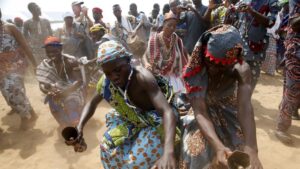
defenders of a certain clan, tribe, or nation. The vodun are the center of religious life. Adherents also emphasize ancestor worship and hold that the spirits of the dead live side by side with the world of the living, each family of spirits having its own female priesthood, sometimes hereditary when it’s from mother to blood daughter.
European colonialism, followed by some of the totalitarian regimes in West Africa, have tried to suppress Vodun as well as other traditional religions. However, because the vodun deities are born to each clan, tribe, and nation, and their clergy are central to maintaining the moral, social and political order and ancestral foundation of its village, these efforts have not been successful.
Recently there have been moves to restore the place of Vodun in national society, such as an Annual International Vodun Conference held in the city of Ouidah in Benin since 1991 See Video (credit : AfricaNews)
Suggested Reading :
General information on Vodoun ( A spirituality that cannot be elucidated) in french by Zekpa Laurent CID Member
LEARN MORE ……..
Zinli
Zinli is a funeral rhythm on the Abomey plateau (historic city of BENIN), which kept this initial role for a long time before also being included in the popular music register.
Prince Gbéyin, (futur king Glele of Dahomey ) created ZINLI in the 19th century on the occasion of the funerals of a friend of his father the king Guezo
It is principally a dance of body expression following a rhythm played by a few instruments
The Zinli is played with a drum vase which gave its name to the rhythm:
All this is accompanied by the sounds of gongs, rattles and clapping of the hands supported by songs and dances.
The renovation that the artist ALEKPEHANHOU (Great Artist of Zinli in Benin) created for it from the 1980s resulted that it spread around the world
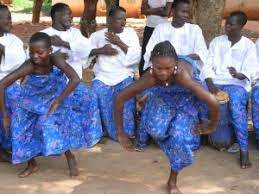
See video by ALEKPEHANHOU :
Abadahoué O Adji W’a Ha credit: Le Roi Alekpehanhou
CENTRAL AND SOUTHERN AFRICA
Bantu Spirituality
The Bantu beliefs are 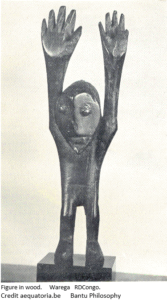 the system of beliefs and legends of the Bantu people of Africa. Although Bantu peoples account for several hundred different ethnic groups, there is a high degree of homogeneity in Bantu cultures and customs, just as in Bantu languages] The phrase “Bantu mythology” usually refers to the common, recurring themes that are found in all or most Bantu cultures
the system of beliefs and legends of the Bantu people of Africa. Although Bantu peoples account for several hundred different ethnic groups, there is a high degree of homogeneity in Bantu cultures and customs, just as in Bantu languages] The phrase “Bantu mythology” usually refers to the common, recurring themes that are found in all or most Bantu cultures
All Bantus traditionally believe in a supreme God. The nature of God is often only vaguely defined, although he may be associated with the Sun, or the oldest of all ancestors, or have other specifications. God is almost never described as the Creator of all things, as in most Bantu mythologies the universe is eternal and has no beginning. Animals are also a part of this eternal universe. While not its creator, God is intimately related to the universe;
All religious practices are intended to worship God. This traditional attitude of Bantu belief systems has been modified, to various degrees and in various ways, by the advent of Christianity (or Islam), as the God of Christians and Muslims has been equated to the Bantu supreme God. Mungu has thus become a God that cares about humanity and that it makes sense to worship and pray to
In most African cultures, including Bantu cultures, veneration of the dead plays a prominent role. The spirits of the dead are believed to linger around and influence the world of the living The traditional culture of most Bantu peoples includes also several fables about personified, talking animals.
Norman Mailer records how he got hold of Bantu Philosophy* from which he extracted the following essential understanding of the world:
“The instinctive philosophy of African tribesmen…saw humans as forces, not beings. So a man was not only himself, but the karma of all generations past that still lived in him, not only a human with his own psyche but part of the resonance, sympathetic and unsympathetic, of every root and thing about him.”
* Suggested Readings
Bantu Philosophy by Placid Tempels
Bantu mythology Wikipedia
Congo Brazzaville Culture and Spirituality
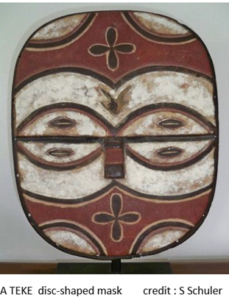 The culture of the Republic of the Congo is rich, diverse and made up of a mix of about 4.5 million people in 2015 and just as many languages and customs.
The culture of the Republic of the Congo is rich, diverse and made up of a mix of about 4.5 million people in 2015 and just as many languages and customs.
Half of Congolese people follow traditional beliefs, and there are 15 principle Bantu groups and more than 70 subgroups. The other half are mostly Christians. The region was dominated by Bantu-speaking tribes, who built trade links leading into the Congo River basin.
The numerous ethnic groups and various political structures express a rich cultural diversity and forms of art. Among the best known are Vili nail fetishes, Beembe statuettes that are full of expression; the masks of the Punu and Kwele, Kota reliquaries, Teke fetishes, and cemeteries with monumental tombs are examples of this variety..
Music and dance in the Congo are omnipresent, mixed, community based, sacred or festive. Births and funerals are celebrated with music and dancing. Each region has its own dance (ex the dance on stilts of Niari). But there are two main influences: the traditional kongo dance (physical pirouette of the pelvis and lower body) and the m’bochis dance (movements of the shoulders and upper body) while the téké dances combine both.
For an overview of Congo Brazzaville culture see the site Vivre au Congo
Learn More …….
EAST AFRICA
Top left image : Oro Efe masks emerging from the Sacred Forest. 1993, Benin. | ©Carol Beckwith & Angela Fisher. Publication “African Ceremonies”
Top middle image : Burundi Sacred Drummers Credit :BBC
Top right image : Yoruba dance staff Brooklyn Museum, New York Credit : Brittanica
